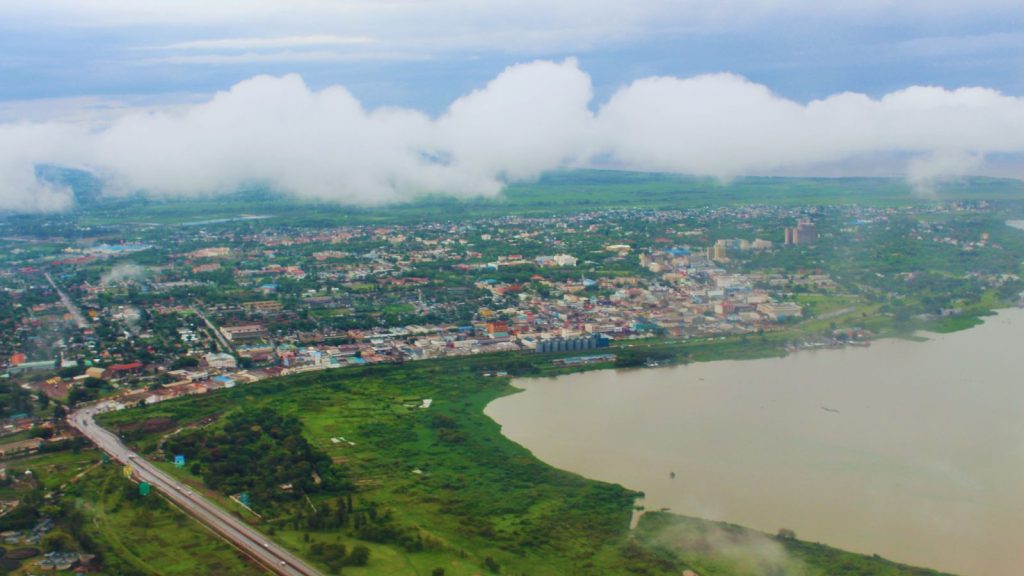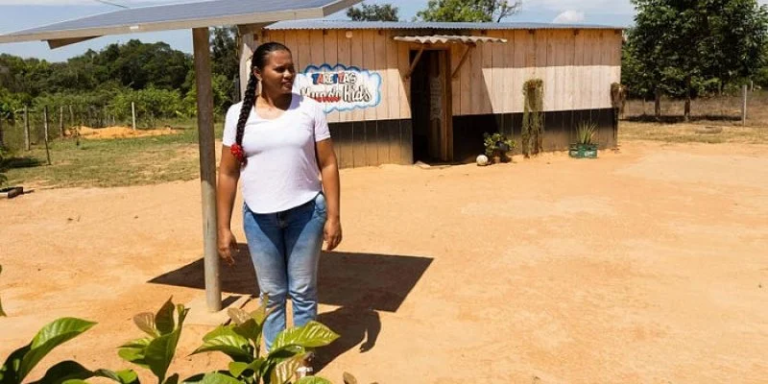On 1 August, ICLEI, in partnership with the County Government of Kisumu, unveiled a tailored-made roadmap towards 100% renewable energy by 2050. Under the 100% Renewables Cities and Regions Roadmap project, Kisumu is sparking the shift to transition its energy landscape. By targeting key sectors such as electricity, transport and clean cooking, the county is setting a powerful example for urban areas worldwide on how to embrace renewable energy solutions.
Kisumu, Kenya’s third-largest city after Nairobi and Mombasa, is a thriving urban area on the shores of Lake Victoria. Home to 1.15 million residents, Kisumu is one of the country’s fastest-growing urban centers. Its name means “a place of barter trade” in the local Luo language, reflecting its historical role as a commercial hub in East Africa. The county’s economy is driven by the sugar and rice industries that fuel the national economy. Yet, beneath its thriving surface, nearly half of its population grapples with poverty, and more than 60% live in rural areas. This poses significant challenges as a sizable share of the population has an unstable power supply, even when grid-connected. In addition, many households rely on traditional fuels like firewood and charcoal for cooking.
As Kisumu develops, it aims to balance urban and rural growth. To address these challenges and shape its future, the county is pursuing its transition to 100% renewable energy. In partnership with ICLEI, the Kisumu County Government has created a customized roadmap to achieve this goal by 2050.
The Roadmap is the culmination of the 100% Renewables Cities and Regions Roadmap project (100%RE), which aims to support local and regional governments in developing comprehensive 100% renewable energy strategies, assessing local potential, and creating bankable projects for further implementation. Last June, during the ICLEI World Congress in São Paulo, Brazil, 100% Renewables Roadmaps for Avellaneda (Argentina) and West Nusa Tenggara Province (Indonesia) were also unveiled.
“Local action is critical. Local governments become focal points in addressing climate change by setting targets, mandating energy efficiency, and exemplifying sustainable practices. Support from national governments and stakeholders is essential to spur innovation and scale up implementation,” emphasized Peraiah Sastry Akella, Sustainable Energy, ICLEI World Secretariat.
Funded by the German Federal Ministry for Economic Affairs and Climate Action (BMWK) through the International Climate Initiative (IKI), the project’s overarching goals include contributing to national climate targets, enhancing energy security, improving efficiency, and creating jobs.
This is particularly important after the UNFCCC COP28 outcomes, which included an unprecedented call to transition away from fossil fuels, triple renewable power, and double energy efficiency by 2030. This commitment provides the only feasible means to align the world with the Paris Agreement goal of limiting global temperature increase to 1,5ºC of pre-industrial levels by 2050.
Kenya is well on its way to achieving this target. Its electricity mix boasts a high proportion of renewable energy. The country is a global leader in geothermal power utilization, harnessing heat from the Earth’s core to generate steam and drive turbines for electricity production, which, as of 2024, was recorded at 44.55%.
“By 2030, Kenya’s electricity supply should be 100% renewable, up from the current level of over 92%. The Kisumu roadmap contributes to the national agenda by supporting investment in and developing local renewable energy resources and adopting energy efficiency technologies to achieve this goal,” says J.J. Gitonga, Director, Renewable Energy, Ministry of Energy and Petroleum, Kenya.
Under the Energy Act of 2019, the nation’s 47 counties are mandated to undertake county energy plans. According to Mr Gitonga, currently, only 19 counties have established or are at advanced stages of developing their plans, Kisumu being one of them.
“We envision 100% renewable energy in Kisumu County by 2050. The 100% Renewables Roadmap guides us towards this ambitious goal. We now know that the county can achieve 100% renewable energy in the electricity, transport, and clean cooking sectors, and we are committed to driving further action to benefit our residents and the planet,” said H.E. Prof. Peter Anyang’ Nyong’o, Governor of Kisumu County.
The Governor’s words summarize the Roadmap’s three action pillars, prioritized by the County: electrification, transport, and clean cooking. Based on energy system modeling by the Fraunhofer Institute for Solar Energy Systems, the pathway demonstrates the feasibility of achieving 100% renewable energy by 2050 through the adoption of solar photovoltaics, providing 90-98% of electricity. Each pillar includes specific actions to be undertaken to achieve the renewable goal.
“Kisumu County has made significant efforts to transition to using cleaner energy, especially in its transport and clean cooking sectors where petrol, diesel, firewood and charcoal are the dominant fuels used. The implementation of the Roadmap, supported by other 100% RE project outputs, will accelerate Kenyan counties’ transitioning,” highlighted Dr Azizat ‘Sola Gbadegesin, Climate Change, Energy and Resilience, ICLEI Africa.

Energizing hospitals
“A significant obstacle to climate action is the lack of projects to secure financing. Under the 100%RE project, we’ve successfully developed a bankable project to promote renewable energy in Kisumu’s healthcare sector,” said Salmon Orimba, Kisumu County Executive Member for the Energy, Transport, Roads and Public Works Department.
Under the 100% Renewables Cities & Regions Roadmap, a finance-ready project has been developed to install renewable energy and energy efficiency measures in eight hospitals, potentially expanding to 14 others. Technical and financial feasibility studies by Bazaruto Renewables revealed that many facilities face challenges such as unreliable grid electricity, lack of electrical power rooms, and reliance on charcoal and firewood for cooking and water heating.
The project aims to address these issues by installing solar PV systems, solar water heaters, and clean cooking technologies in the hospitals’ kitchens while improving efficiency with the use of LED lighting. These improvements are expected to provide a more reliable energy supply, reduce energy consumption by 30%, and cut county energy bills by 20%. The resulting savings could be reinvested in healthcare priorities such as medical supplies, medicine, and equipment.
Powering urban living
Kibuye Market is one of the largest open-air, 24-hour markets in East Africa. This bustling space houses around 10,000 traders and attracts thousands of shoppers daily, mainly buying fresh produce and goods, from groceries to clothes. In recent years, some basic infrastructure has been built, especially roofs, to offer shadow, and some stalls are connected to electricity.
Under the 100%RE project, a concept note has been developed to transition the market to renewables by installing solar micro-grids. These will provide lighting for night trading, and electricity to power cold storage, reducing post-harvest fish, meat, and horticultural product losses. With the adoption of renewables, the project ensures lower electricity bills, benefiting traders and small and medium enterprises, thereby boosting local economic growth and sustainability.

Further potential projects include advancing commercial electric mobility by electrifying boda-bodas (motorcycles) and tuk-tuks, the primary modes of transportation for residents and freight, which are also major contributors to the county’s greenhouse gas emissions.
Solar-powered water pumping facilities in rural areas will reduce dependence on petrol and diesel generators. As Kisumu experiences rapid population growth, targeted communities around newly established towns—where residents live below the poverty line, face poor water quality and must travel long distances to access water sources—will benefit from standalone solar-powered water pumping.
Finally, Kisumu’s 100%RE Roadmap emphasizes implementing electric cooking solutions to reduce reliance on firewood and charcoal. This shift addresses public health hazards like indoor air pollution and reduces the strain on biomass resources such as trees. Investing in e-cooking solutions will improve residents’ livelihoods by reducing respiratory illnesses, lowering costs, and creating green jobs.
“Our main objective is to improve the overall welfare of Kisumu County residents. The decisions we make now can tackle the consequences of climate change,” asserted Governor Anyang’ Nyong’o. “However, we can not do it alone. The Roadmap has promoted multilevel governance, where all national, local, and private sector stakeholders must come together to achieve our common goal. Through the Roadmap, we know what we need to do. Now, we need to raise funds to take these actions forward,” he concluded.

*This blog was written based on the Kisumu County 100% Renewables Cities and Regions Roadmap launching ceremony on 1 August 2024, in Kisumu, Kenya, and an interview conducted by ICLEI with Mr. J.J. Gitonga, Director, Renewable Energy, Ministry of Energy and Petroleum, Kenya.
Source link : View Article
Author
-

Barbara Riedemann is a journalist with over ten years of experience creating and editing print and digital media content. She has worked in the private media sector and governmental institutions. She is currently a communication master's student at the University of Heidelberg in Germany.



